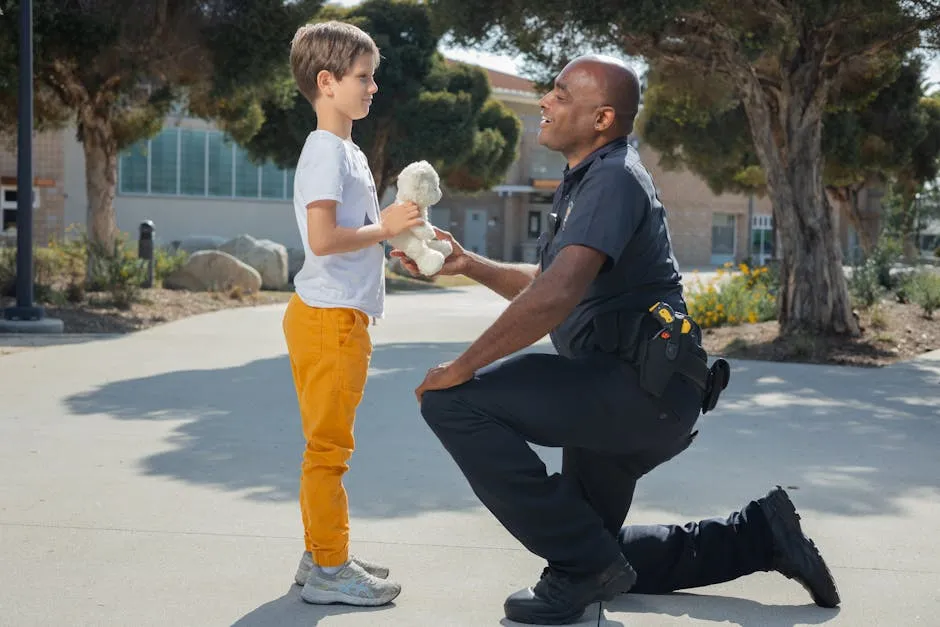Introduction
Flint, Michigan, is a city that has seen its fair share of ups and downs. Known for its rich automotive history and the infamous water crisis, Flint also grapples with crime. The city’s crime rates have been a topic of concern for residents and visitors alike. Understanding these statistics is crucial, not just for those living in Flint but also for potential visitors and policymakers.
Crime statistics provide insight into safety levels, guiding individuals in making informed decisions. For residents, knowing the crime trends can aid in community engagement efforts. For visitors, it helps plan safer travel routes. Policymakers can use this data to allocate resources effectively and develop strategies to improve safety.
In this article, we will break down Flint’s crime statistics, looking at historical trends and recent data. Readers can expect to learn about the factors influencing crime in Flint, the current state of crime, and comparisons with national and state averages. By the end, you will gain a clearer understanding of Flint’s crime landscape, empowering you with knowledge that can spark discussions about community safety.

Overview of Crime in Flint
Historical Context
Flint’s crime rates have fluctuated over the years, with peaks and declines that often mirror the city’s economic health. The late 2000s marked a significant spike in violent crime, making Flint one of the most dangerous cities in the U.S. Economic downturns, particularly the decline of the auto industry, contributed to rising unemployment and poverty rates, which in turn fueled crime. As jobs vanished, so did hope for many residents, leading to increased instances of desperation-driven criminal activity.
During the peak years, from 2007 to 2009, Flint consistently ranked among the top five cities for violent crime in the nation. However, the following years saw some declines, thanks in part to community initiatives and law enforcement efforts. Despite these improvements, Flint’s crime rates remain significantly higher than national averages, indicating that challenges persist.
Current Crime Statistics
According to the latest data from 2022, Flint’s overall crime rate stands at 26.94 per 1,000 residents, which is considerably higher than the national average of 22.7. The violent crime rate is particularly alarming at 12.75 per 1,000 residents, compared to the Michigan state average of 4.61 per 1,000. This disparity highlights the heightened risk residents face daily.
Understanding crime statistics is essential for recognizing safety issues in communities like Flint. Having the right tools is crucial for personal safety. Consider investing in a Personal Safety Alarm Keychain. It’s a small but effective tool that can make a big difference in emergency situations, providing peace of mind when you’re out and about.

When looking at property crimes, Flint’s rate of 14.19 per 1,000 residents also exceeds the state average. The likelihood of becoming a victim of violent crime in Flint is approximately 1 in 78, while for property crimes, it’s about 1 in 70. Such statistics can be intimidating, but they also serve as a call to action for community members to invest in safety measures and awareness.
Data sourced from the FBI and NeighborhoodScout reveals a breakdown of specific crime categories. For instance, in 2022, Flint recorded 17 murders, 94 rapes, and a staggering 878 assaults. Property crimes included 219 burglaries and 738 thefts. These numbers paint a vivid picture of the challenges the city faces and underscore the need for ongoing community engagement and law enforcement efforts.
With crime rates this high, Flint is not merely a statistic but a community striving for improvement. Understanding these numbers is the first step toward fostering a safer environment for all. As we continue to analyze these statistics, we aim to uncover insights that can help Flintians navigate their daily lives with a bit more safety and confidence. Investing in a Home Security Camera System can provide an extra layer of protection, allowing residents to monitor their surroundings and feel more secure in their homes.

Key Crime Statistics
Violent Crime Rates
Flint, Michigan, has faced significant challenges with violent crime. The latest statistics reveal that the violent crime rate stands at 12.75 per 1,000 residents. To put this into perspective, the chances of becoming a victim of violent crime in Flint are about 1 in 78. This is a stark contrast to the Michigan state average, which is only 4.61 per 1,000 residents.
When breaking down specific violent crimes, the figures tell a compelling story. In 2022, Flint reported 17 murders, translating to a rate of 0.21 per 1,000 residents. Rape incidents accounted for 94 reported cases, or 1.18 per 1,000 residents. Robbery saw 29 incidents, reflecting a rate of 0.36 per 1,000. The most alarming statistic is the number of assaults, totaling 878 cases, which leads to a staggering rate of 11.00 per 1,000 residents.
Over the last decade, the trends in Flint’s violent crime rates have fluctuated. Following a peak in the late 2000s, initiatives aimed at crime reduction led to a temporary decline. However, recent years have seen a resurgence in crime levels. While some progress is evident, the city continues to grapple with high rates of violent crime, indicating a need for continued community engagement and effective law enforcement strategies. Carrying a Self-Defense Keychain can be a practical option for those looking to enhance their personal safety as they navigate the streets of Flint.
Property Crime Rates
Property crime is another pressing concern for Flint residents. The property crime rate currently stands at 14.19 per 1,000 residents, which is significantly higher than the Michigan average. Victims of property crime in Flint face a 1 in 70 chance of becoming a statistic.
Breaking this down further, burglary accounted for 219 incidents, resulting in a rate of 2.74 per 1,000 residents. Theft remains the most prevalent property crime, with 738 reported cases, which equates to a rate of 9.24 per 1,000. Lastly, motor vehicle theft is also a concern, with 176 incidents reported, leading to a rate of 2.20 per 1,000 residents.
When comparing Flint’s property crime rates to surrounding regions, the city stands out negatively. Between 2021 and 2022, property crimes rose by 41%, which highlights an alarming trend for community safety and quality of life. Residents are understandably concerned about these statistics, as they directly impact their sense of security and overall wellbeing. In light of this, having a Home Security System with App Control can provide peace of mind, allowing homeowners to monitor their property remotely and react promptly to any suspicious activities.

Neighborhood Safety Rankings
Flint’s neighborhoods vary widely in safety. Some areas are relatively safe, while others are notorious for higher crime rates. For instance, neighborhoods like Richfield Rd / Eastdale Dr and University Avenue Neighborhood / Flint West Village rank among the safest. In contrast, areas such as College Cultural and Mott Park face more significant safety challenges.
Community initiatives are underway to improve safety in high-crime areas. Local organizations are collaborating with law enforcement to implement programs aimed at crime prevention, community engagement, and neighborhood watch initiatives. These efforts focus on creating a sense of community and belonging, as well as providing resources for residents to feel safer in their environment. You might also find it beneficial to have a Fire Extinguisher handy, as safety in the home also plays a crucial role in overall community safety.
As Flint continues to address its crime challenges, the importance of neighborhood safety cannot be overstated. By highlighting both the safest and most dangerous neighborhoods, the community can better understand where to focus efforts for improvement. Engaging residents in discussions about safety and emphasizing community involvement will be vital to fostering a safer Flint for all.

In summary, the crime statistics in Flint paint a complex picture. While the city has made strides in certain areas, persistent challenges remain. Understanding these statistics is crucial for residents and community leaders alike as they work towards a safer future.
Comparative Analysis
Flint vs. Other Michigan Cities
When we stack Flint’s crime statistics against other Michigan cities, it’s like comparing apples to, well, really rotten apples. Flint’s overall crime rate stands at 26.94 per 1,000 residents, putting it in the upper echelon of crime-ridden cities in the state. For perspective, cities like New Lothrop and Linden boast significantly lower crime rates, with New Lothrop reporting no violent crimes at all.
In contrast, Flint’s violent crime rate is a staggering 12.75 per 1,000 residents. This is more than double the Michigan state average of 4.61. Nearby cities such as Burton and Grand Blanc show lower rates as well, with Burton at approximately 6.35 per 1,000 and Grand Blanc at around 2.50. So, why the discrepancy?
Several factors contribute to these differences. For one, economic conditions play a huge role. Flint has faced persistent poverty and unemployment, which often correlate with higher crime rates. The poverty rate in Flint hovers around 37.3%, compared to the state average of 15.1%. Communities with better economic conditions often enjoy lower crime rates, as residents have access to more legitimate employment opportunities and social services.

Moreover, law enforcement strategies differ across cities. Some areas benefit from more robust community policing efforts, which can help build trust and cooperation between residents and law enforcement. Flint’s police department has faced challenges, including staffing shortages, which impact its ability to effectively manage crime. To enhance personal safety, consider using a Pepper Spray as a self-defense tool, which can provide a sense of security when walking through less populated areas.
Flint’s Crime Rate Over Time
Flint’s crime rate has seen its fair share of ups and downs over the years. The last decade, in particular, is a rollercoaster of crime trends worth noting. In the late 2000s, Flint was often crowned as one of America’s most dangerous cities. However, from 2010 to 2019, there was a noticeable decline in violent crimes, with significant reductions in murder rates and assaults.
Fast forward to recent years, and the crime statistics tell a different story. In 2022, Flint witnessed an increase in violent crime, with a reported 878 assaults, which translates to a jaw-dropping 11.00 per 1,000 residents. The community initiatives and law enforcement changes made during the previous decade have not completely shielded Flint from a resurgence in crime.
A pivotal moment came in 2011 when the Flint Police Department received federal funding to hire back laid-off officers. This funding aimed to improve policing and community safety. However, as the years rolled on, budget cuts and staff shortages returned. Currently, Flint employs only about 1.4 police officers per 1,000 residents, significantly lower than the Michigan average of 2.1.
Community programs also play a crucial role in shaping crime trends. Initiatives such as neighborhood watch programs and youth engagement activities aim to foster a sense of community and deter crime. The success of these programs varies, but they contribute to a collective effort toward reducing crime. An essential resource for families is a First Aid Kit, ensuring that you are prepared for any emergencies that may arise in your community.

Regional and National Comparisons
Understanding Flint’s crime rates requires a broader lens, especially when comparing them to national averages. Flint’s violent crime rate is a whopping 233% higher than the national average of 22.7 per 1,000 residents. This places Flint in the troubling position of being a crime outlier, not just in Michigan, but across the entire United States.
For context, cities with similar socio-economic challenges, such as Detroit and Saginaw, often share high crime rates as well. While Flint is not alone in its struggles, the numbers underscore a pressing need for community involvement and effective strategies to combat crime. To bolster your safety while commuting, consider utilizing a Reflective Safety Vest to ensure visibility, especially during nighttime walks or jogs.
Moreover, despite improvements seen in some areas, Flint still grapples with a significant number of unsolved crimes. A 2018 report noted that many violent crimes, including homicides, remain unresolved, adding to the community’s sense of insecurity.
In the grand scheme of things, Flint highlights the importance of addressing underlying social issues alongside boosting law enforcement efforts. As communities rally together, the hope is that crime rates will not only stabilize but eventually decline, paving the way for a safer environment for all residents. Having a Emergency Blanket can also be a lifesaver in unexpected situations, making it a wise addition to your safety kit.

In summary, Flint’s crime landscape is complex, influenced by economic hardships, law enforcement challenges, and community initiatives. As we continue to navigate these statistics, it’s clear that understanding and addressing the root causes of crime is essential for making meaningful progress.
Community Perspectives
Local Sentiments on Crime
Flint residents have a mixed bag of feelings about safety in their city. A recent survey conducted by AreaVibes revealed that only 17% of respondents feel secure, claiming crime is almost non-existent. On the flip side, a staggering 83% expressed apprehension regarding crime levels, especially during the night. This sentiment reflects a community grappling with fear and uncertainty.
Anecdotes from locals echo these findings. One resident, Sarah, shared, “I never thought I’d hesitate to walk my dog after dark. It used to be a normal part of my routine.” Others voiced concerns about their children playing outside, often opting to keep them indoors for safety.
Residents also voiced their views on law enforcement effectiveness. While many appreciate the visible presence of police officers, a significant number feel that response times are sluggish. According to a poll, 46% of respondents believe the police are visible but respond slowly when needed. This perception affects community trust and engagement with law enforcement.

Moreover, improvements in crime rates have been noted since 2015, but the gains seem fragile. Many residents express hope, yet they worry that without more robust community policing and resources, these efforts might falter. One local remarked, “It’s like a seesaw; we go up and down with crime, and it’s exhausting.” To prepare for emergencies, consider having a Trauma First Aid Kit readily available to address any serious injuries that may occur in your neighborhood.
Law Enforcement Response
The Flint Police Department (FPD) is the backbone of law enforcement in Flint. It has faced numerous challenges, particularly staffing shortages. The department’s numbers have dwindled over the years due to budget cuts and a declining population. Currently, Flint has approximately 1.4 police officers per 1,000 residents, significantly lower than the Michigan average of 2.1.
In response to these challenges, the FPD has implemented various community engagement initiatives. Programs like neighborhood watch and community policing aim to foster relationships between officers and residents. Chief Terence Green emphasizes the importance of community involvement. “We need residents to be our eyes and ears,” he stated.
Additionally, past federal grants helped rehire some laid-off officers, which provided a temporary boost in staffing. The Crime Area Target Team, established in 2016, focuses on combating drug trafficking and firearms offenses. Their recent operations have led to significant seizures and arrests, showcasing the department’s commitment to tackling crime head-on. To enhance your home security, consider installing a Smart Doorbell with Camera, which can help monitor who is at your door.

However, despite these efforts, many locals remain skeptical. Some residents feel that law enforcement’s approach lacks the necessary resources to effectively manage crime. As one concerned citizen put it, “We need more than just a police presence; we need proactive solutions.” Having a Fireproof Document Bag can also protect your important papers in case of an emergency.
Future Outlook and Initiatives
Current Efforts
In light of rising crime rates, local government and community organizations are stepping up to tackle these issues. Initiatives like the Flint Community Safety Plan focus on crime prevention and community empowerment. This plan encourages collaboration between residents and law enforcement, aiming for a united front against crime.
Local organizations are also crucial in these efforts. Groups like the Flint Neighborhood Coalition work tirelessly to provide resources, advocacy, and support for residents. Their community programs promote safety awareness and encourage residents to report suspicious activities. To enhance your preparedness, consider creating a Family Emergency Plan Booklet to ensure everyone in your household knows what to do in case of an emergency.

Additionally, recent partnerships with state agencies aim to bolster Flint’s law enforcement capabilities. These partnerships provide much-needed funding and resources to improve police training and community outreach. Mayor Sheldon Neeley has been vocal about the importance of investing in public safety, stating, “We must work together to create a safer Flint for everyone.”
Predictions for Crime Trends
Looking ahead, the combination of ongoing community initiatives and law enforcement strategies presents a hopeful outlook for Flint. With continued investment in resources and the active involvement of residents, there’s potential for crime rates to decline. However, this will require sustained commitment from both the community and law enforcement.
The challenges are significant, but Flint’s residents are resilient. As they come together for discussions about safety and engage in initiatives, the community can work toward a brighter, safer future. Investing in a Emergency Water Storage Container is also a wise decision to ensure your family stays hydrated in case of unforeseen events.

Predictions for Crime Trends
Flint, Michigan, has faced a tumultuous history with crime. However, current data suggests potential positive shifts on the horizon. Community efforts, such as neighborhood watch programs and increased police engagement, are key players in this narrative. When residents take an active role, crime rates can see a downward trend.
The Flint Police Department has also been ramping up its community policing strategies. This approach fosters trust and cooperation between officers and residents. A strong partnership often leads to proactive crime prevention. As citizens feel more comfortable reporting suspicious activities, law enforcement can respond more effectively. A Multi-Tool Pocket Knife can also be a handy tool for various situations, providing convenience and safety for everyday tasks.
Continued investment in community programs is essential. Allocating resources for youth engagement activities and public safety workshops can create a more informed and vigilant populace. Moreover, funding for mental health support can address root causes of crime.
Support for law enforcement is equally crucial. Flint’s police force has been navigating challenges, including staffing shortages. By investing in training and hiring, officers can better serve the community. This commitment can help build a safer environment for everyone. Having a Bicycle Safety Helmet is also essential for young riders, ensuring that they are protected while enjoying their rides.

In summary, the future of crime trends in Flint hinges on the collaboration between law enforcement and community members. With ongoing efforts and support, there’s hope for a significant reduction in crime rates.
FAQs
What is the current crime rate in Flint, Michigan?
As of 2022, Flint’s overall crime rate is 26.94 per 1,000 residents, significantly higher than the national average of 22.7. The violent crime rate is particularly concerning at 12.75 per 1,000 residents, while the property crime rate stands at 14.19 per 1,000 residents.
How does Flint compare to other cities in Michigan?
Flint’s crime rates overshadow many other Michigan cities. For instance, the state average for violent crime is just 4.61 per 1,000 residents. While cities like New Lothrop and Grand Blanc boast lower crime rates, Flint faces challenges that set it apart from these safer communities.
What are the safest neighborhoods in Flint?
Some neighborhoods in Flint are considered safer than others. Richfield Rd / Eastdale Dr and the University Avenue Neighborhood / Flint West Village rank among the safest areas, showing lower crime rates and a sense of community engagement.
What steps are being taken to improve safety in Flint?
Multiple initiatives focus on enhancing safety in Flint. Community programs, such as neighborhood watch efforts and youth outreach, aim to build trust between residents and law enforcement. The Flint Police Department is also enhancing its community policing strategies to foster collaboration.
How can residents contribute to reducing crime in Flint?
Residents can play an active role in crime reduction by participating in community programs, engaging with local law enforcement, and reporting suspicious activities. Joining local organizations and attending community meetings can also strengthen neighborhood ties and promote safety.
Please let us know what you think about our content by leaving a comment down below!
Thank you for reading till here 🙂
All images from Pexels




